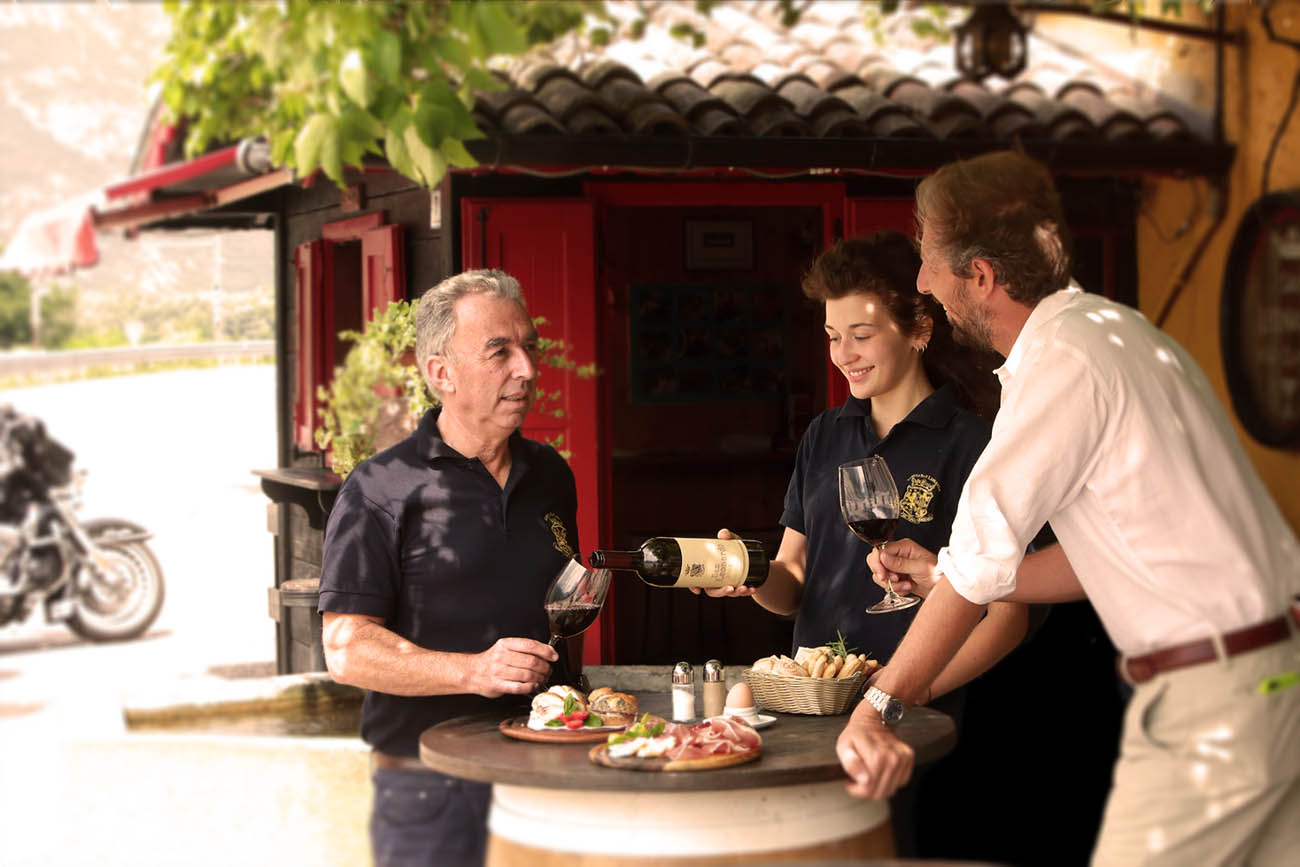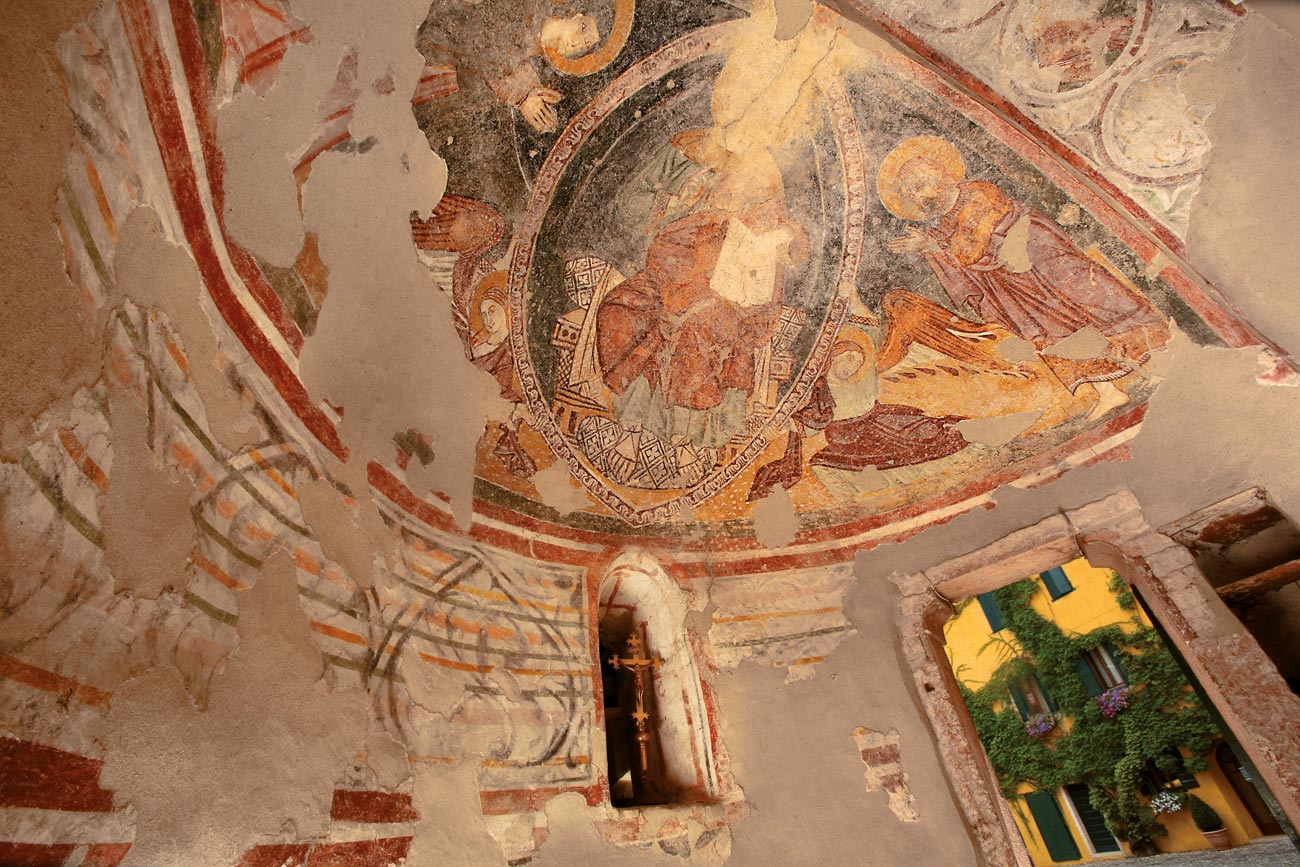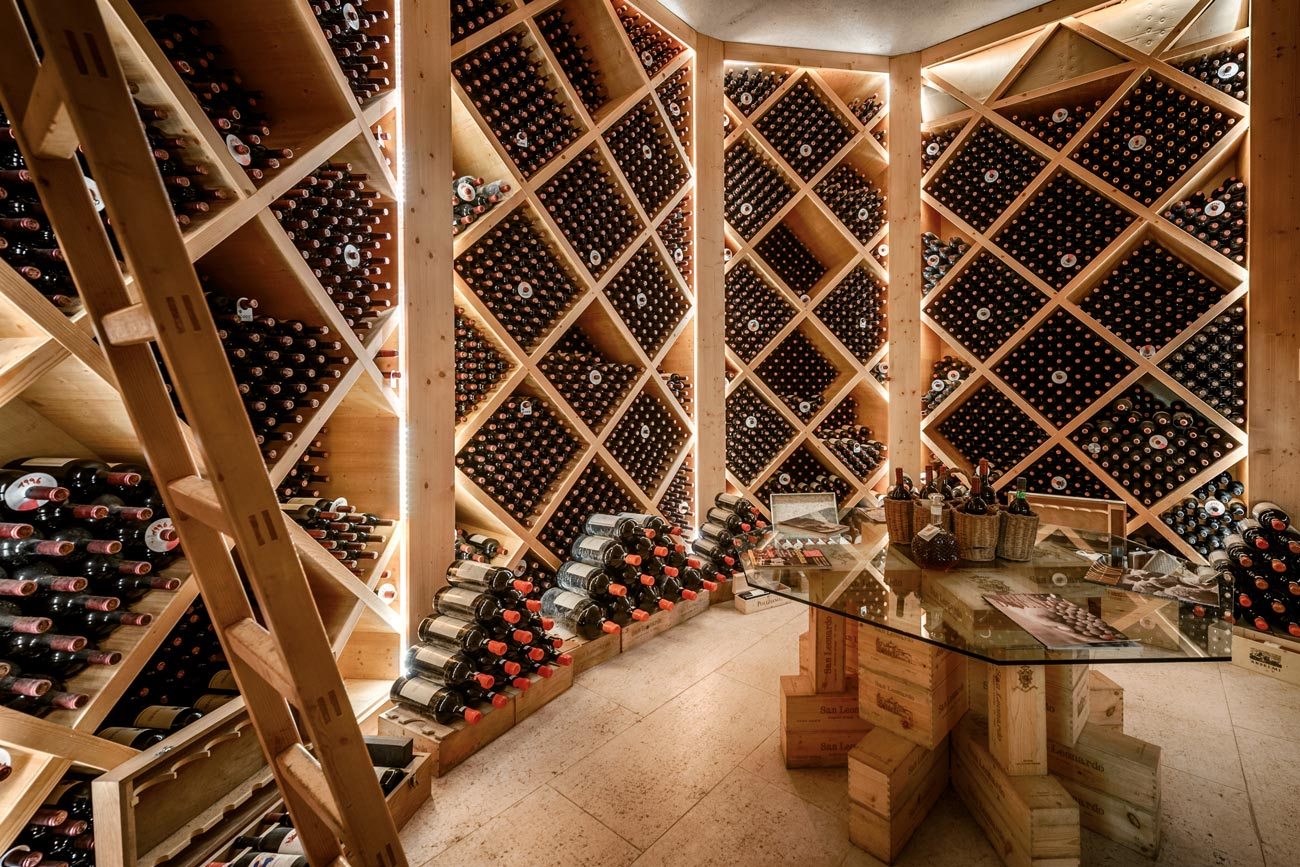

the
WINE SHOP
Outside the estate there is the San Leonardo wine shop. A place that tells the story of our world where you can discover, taste and buy San Leonardo wines.
Phone: 0464 689004 - Email: [email protected]
Phone: 0464 689004 - Email: [email protected]

the
CHURCH
San Leonardo in Sarnis, a place-name clearly documented as early as 1215, lies on the left bank of the Adige, the river that flows majestically through expanses of striking vineyards. Rising at the centre of this tiny medieval hamlet is the church dedicated to San Leonardo di Noblac, whose cult was introduced from France in the 6th century. Around this ancient religious site grew the monastery of the Frati Crociferi (the Crutched Friars); it was surrounded in turn by impressive expanses of fields, vineyards, and woods. Only the apse of the monastery church is still visible today, bearing a medieval fresco of Christ carried by angels with Mary and St. John the Baptist in prayer. But the church, with its 18th-century painting dedicated to San Leonardo, patron saint of prisoners, still serves today as a place of devotion for the family and the residents of San Leonardo.

the
VILLAGE
San Leonardo is a very ancient hamlet, whose origins are lost in time. But even before the year 1000, San Leonardo in Sarnis was known as a place where the grapevine flourished. There the Frati Crociferi (the Crutched Friars) perfected their winemaking skills, to the point of being highly esteemed by the Austro-Hungarian court in Vienna. The boundaries of today’s estate, which boasts 300 hectares, aligns precisely with the perimeter of the ancient feudal settlement. The Marchesi Guerrieri Gonzaga, owners and winegrowers at San Leonardo since the 18th century, have always played a major role in its centuries-old history, and this long family tradition today embraces every corner of the estate, which is a world of its own, a borgo within its own circuit of walls.

the
WINERY
The venerable fermentation cellar contains just vats built of concrete. Here, the red wines start fermentation spontaneously, without the help of technology or of cultured yeasts. These fermentations generally last not more than 15/18 days, during which they undergo multiple pumpovers and délestage. Once the fermentations are complete, the wine is drawn off and the remaining pomace is gently pressed under the watchful eye of San Leonardo’s cellar workers, who have passed down this art from generation to generation.

the
VILLA
Secluded within the estate park, Villa Gresti memorialises the family name of Marchesa Gemma de Gresti Guerrieri Gonzaga, who chose it as the operative centre for her numerous charitable activities. Constructed in the late 19th century in Italy’s Liberty Style, it served during the First World War as the headquarters of Italy’s Army Corps, which oversaw relations with the Austrian delegation empowered to discuss the armistice. Today it is the residence of the Guerrieri Gonzaga family.

the
MUSEUM
What was once an ancient granary is today the museum of San Leonardo and the showplace for preserving and conveying the life of a past era on the tenuta. It offers straightforward but effective testimony and objects that paint a portrait of the peasant way of life and the hard work required by grape-growing, by the cultivation of crops such as the silkworm, by goods transportation, and by animal husbandry. Integrated with this collection is a rich archive of documents, going back to 1500, pertaining to estate, with particular space dedicated to Marchesa Gemma Guerrieri Gonzaga and to the First World War, during which the village of San Leonardo was the stage for major events. In addition, the courtyard preserves a fascinating collection of historic, early-20th-century tractors perfectly preserved and in working condition.

